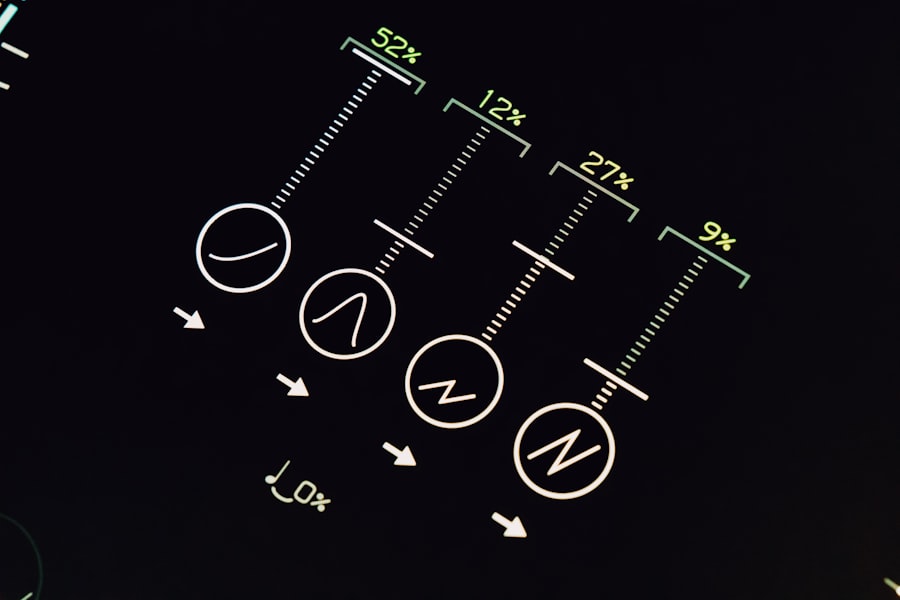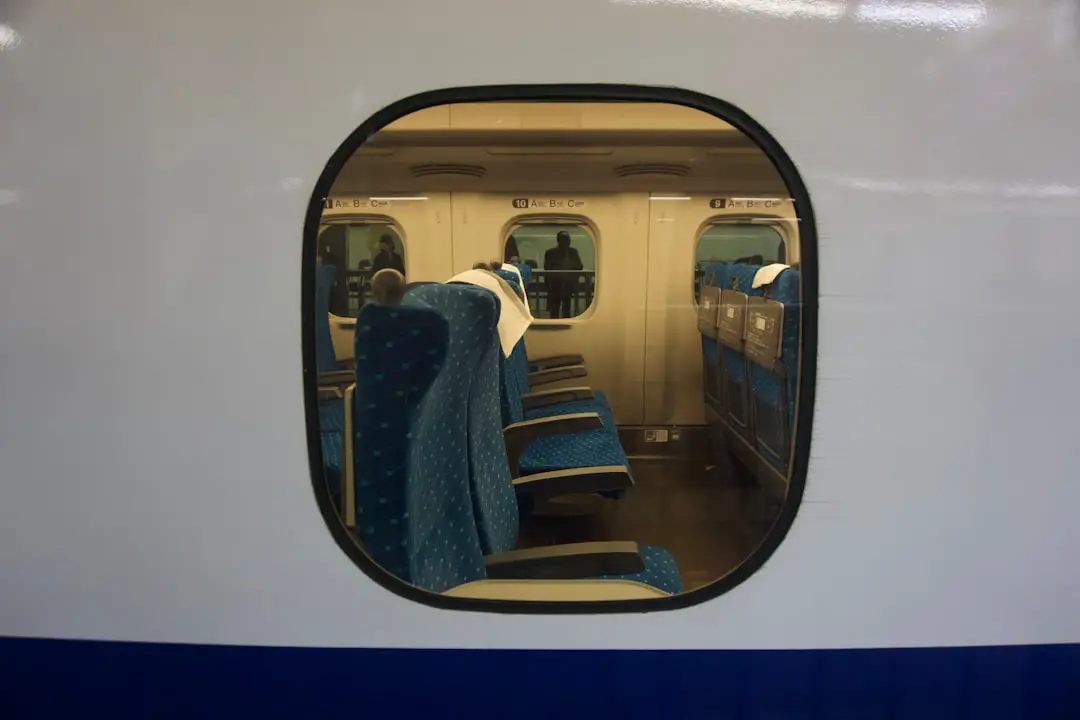The concept of pitch in airline seating is a critical factor that significantly influences the overall travel experience for passengers. As air travel continues to be a primary mode of transportation for millions around the globe, understanding the nuances of seat design becomes increasingly important. Pitch, defined as the distance between a point on one seat and the same point on the seat in front of it, directly correlates with legroom and personal space.
This seemingly simple measurement can have profound implications for passenger comfort, health, and satisfaction during flights. In an era where airlines are constantly vying for customer loyalty and competitive advantage, the importance of pitch cannot be overstated. Airlines that prioritize passenger comfort through thoughtful seat design and adequate pitch are more likely to attract repeat customers and positive reviews.
Conversely, inadequate pitch can lead to discomfort, dissatisfaction, and ultimately, a negative perception of the airline.
Key Takeaways
- Pitch is the distance between a point on one seat and the same point on the seat in front or behind it, and it plays a crucial role in passenger comfort and health.
- A smaller pitch can lead to discomfort, reduced legroom, and potential health issues for passengers, while a larger pitch can enhance comfort and overall passenger experience.
- The importance of pitch in relation to legroom cannot be overstated, as it directly impacts the amount of space available for passengers to stretch and move their legs during a flight.
- Airlines consider pitch when designing and configuring their seats, as it influences the overall layout and arrangement of the cabin, affecting the passenger experience and the airline’s profitability.
- Pitch also plays a significant role in airline seat pricing and class differentiation, as different pitch configurations often correspond to different classes and price points.
Understanding the Concept of Pitch in Airline Seats
Pitch is often confused with seat width or overall cabin space, but it is a distinct measurement that specifically pertains to the distance between seats in a row. Typically measured in inches, pitch can vary significantly across different airlines and aircraft types. For instance, economy class seats on a regional jet may have a pitch of 30 inches, while long-haul international flights might offer 32 to 34 inches of pitch in economy class.
This variation is not arbitrary; it reflects the airline’s strategy regarding passenger comfort and space allocation. The measurement of pitch is crucial for several reasons. First, it directly impacts how much room passengers have to stretch their legs during a flight.
A greater pitch allows for more legroom, which can be particularly beneficial on longer flights where passengers are seated for extended periods. Additionally, pitch can influence how easily passengers can get in and out of their seats, especially in crowded cabins. Understanding pitch is essential for both airlines and passengers, as it serves as a key indicator of what to expect in terms of comfort and space during air travel.
Impact of Pitch on Passenger Comfort and Health

The relationship between pitch and passenger comfort is well-documented. Insufficient pitch can lead to a range of discomforts, from cramped legs to difficulty in maintaining a comfortable posture during flights. Passengers with longer legs or those who are taller may find themselves particularly affected by limited pitch, leading to an uncomfortable journey that can detract from their overall travel experience. Furthermore, discomfort during flights can have health implications; prolonged periods of immobility in cramped conditions can increase the risk of deep vein thrombosis (DVT), a serious condition that can arise from poor circulation. Airlines have begun to recognize the importance of addressing these health concerns by offering improved pitch options.
Some airlines have introduced premium economy classes that provide additional legroom and enhanced comfort features. These offerings not only cater to health considerations but also enhance the overall passenger experience by allowing travelers to arrive at their destinations feeling less fatigued and more refreshed. The impact of pitch on passenger comfort and health is thus a critical consideration for airlines aiming to improve their service offerings.
Importance of Pitch in Relation to Legroom
| Seat Pitch (inches) | Legroom (inches) | Importance |
|---|---|---|
| 28 | 28 | Low |
| 30 | 30 | Medium |
| 32 | 32 | High |
Legroom is often cited as one of the most significant factors influencing passenger satisfaction during flights. The relationship between pitch and legroom is straightforward: greater pitch typically translates to more legroom. This is particularly important for passengers who may be traveling on long-haul flights where they are seated for several hours at a time.
Airlines that provide adequate legroom through thoughtful pitch design can significantly enhance the travel experience, making it more enjoyable and less stressful. Moreover, the importance of legroom extends beyond mere comfort; it also plays a role in passenger safety. In emergency situations, having sufficient space to maneuver can be crucial for quick evacuations.
Airlines must balance the need for maximizing passenger capacity with ensuring that there is enough legroom for safety and comfort. This balancing act often leads to varying configurations across different aircraft types and classes, with some airlines opting for tighter configurations in economy class while providing more generous spacing in premium cabins.
How Pitch Affects Airline Seat Design and Configuration
The design and configuration of airline seats are heavily influenced by pitch measurements. Airlines must consider various factors when designing their seating arrangements, including aircraft type, target market, and overall service strategy. For example, low-cost carriers often prioritize maximizing the number of seats on an aircraft, which may result in reduced pitch and consequently less legroom for passengers.
In contrast, full-service airlines may opt for more generous pitch measurements to enhance passenger comfort and differentiate their offerings. Seat design also encompasses considerations such as seat width, recline capabilities, and materials used in construction. The interplay between these factors and pitch can create a complex web of decisions for airlines as they seek to optimize both passenger comfort and operational efficiency.
For instance, an airline may choose to implement a staggered seating arrangement that allows for increased pitch without sacrificing overall cabin capacity. Such innovations reflect the ongoing evolution of airline seat design in response to changing passenger expectations.
Pitch and its Influence on Passenger Experience

Passenger experience is increasingly becoming a focal point for airlines as they strive to differentiate themselves in a competitive market. Pitch plays a pivotal role in shaping this experience, influencing everything from initial impressions during boarding to overall satisfaction upon arrival at the destination. A well-designed cabin with adequate pitch can create a sense of spaciousness that enhances the travel experience, while cramped conditions can lead to frustration and dissatisfaction.
Airlines are aware that passenger experience extends beyond just physical comfort; it encompasses emotional responses as well. A positive experience can lead to brand loyalty and repeat business, while negative experiences can result in lost customers and damaging reviews. As such, airlines are investing in research and development to better understand how pitch affects passenger perceptions and experiences during flights.
This focus on enhancing passenger experience through thoughtful seat design is likely to continue shaping industry trends in the years to come.
The Role of Pitch in Airline Seat Pricing and Class Differentiation
Pitch is not only a measure of comfort but also serves as a key differentiator between various classes of service within an airline’s offerings. Airlines typically use pitch as one of the primary metrics to justify pricing differences between economy, premium economy, business, and first-class seats. For example, business class seats often feature significantly greater pitch—sometimes exceeding 60 inches—allowing for lie-flat configurations that cater to high-paying travelers seeking maximum comfort.
This differentiation based on pitch allows airlines to segment their customer base effectively, catering to both budget-conscious travelers and those willing to pay a premium for enhanced comfort and service. The pricing strategy surrounding pitch also reflects broader market trends; as competition intensifies among airlines, there may be pressure to offer more competitive pricing while still maintaining adequate levels of comfort through appropriate pitch measurements.
Pitch and its Impact on Airline Profitability
The relationship between pitch and airline profitability is multifaceted. On one hand, reducing pitch can allow airlines to increase the number of seats on an aircraft, potentially leading to higher revenue per flight. However, this strategy must be balanced against the risk of diminishing passenger comfort and satisfaction, which could ultimately harm brand reputation and customer loyalty.
Airlines must carefully analyze their seating configurations to find an optimal balance that maximizes profitability while still providing an acceptable level of comfort. Moreover, airlines that invest in improving pitch may find that they can charge higher fares or attract more premium customers willing to pay extra for enhanced comfort features. This investment can lead to increased profitability over time as satisfied customers are more likely to return for future flights or recommend the airline to others.
Thus, while there may be short-term financial incentives to reduce pitch, long-term profitability often hinges on maintaining a focus on passenger comfort through thoughtful seat design.
Regulatory Standards and Guidelines for Pitch in Airline Seats
Regulatory standards regarding pitch are generally established by aviation authorities such as the Federal Aviation Administration (FAA) in the United States or the European Union Aviation Safety Agency (EASA) in Europe. While there are no specific regulations mandating minimum pitch measurements for commercial aircraft seating, these authorities do set guidelines related to safety and emergency evacuation procedures that indirectly influence seat design. For instance, regulations may dictate how quickly passengers must be able to exit an aircraft in an emergency situation, which can impact how much space is allocated per seat row based on pitch measurements.
Airlines must ensure that their seating configurations comply with these safety standards while also considering passenger comfort and operational efficiency. As air travel continues to evolve, regulatory bodies may revisit these guidelines to address emerging concerns related to passenger health and safety.
Innovations and Trends in Pitch Management by Airlines
As airlines seek to enhance passenger experience through innovative seating solutions, several trends have emerged regarding pitch management. One notable trend is the introduction of adjustable seating configurations that allow airlines to modify pitch based on demand or flight duration. For example, some airlines have experimented with flexible seating arrangements that can be adjusted before boarding based on passenger load factors or specific route requirements.
Additionally, advancements in seat design technology have led to lighter materials being used in construction, allowing airlines to maintain or even increase pitch without significantly impacting overall aircraft weight or fuel efficiency. Innovations such as slimline seats have gained popularity as they provide more space without compromising structural integrity or safety standards.
The Future of Pitch in Airline Seat Design and Passenger Experience
The future of pitch in airline seat design will likely continue evolving as airlines strive to balance passenger comfort with operational efficiency and profitability. As consumer preferences shift towards greater emphasis on comfort during air travel, airlines will need to adapt their seating configurations accordingly. Innovations in materials science and seat design technology will play a crucial role in shaping how airlines approach pitch management moving forward.
Furthermore, as regulatory bodies continue to assess safety standards related to seating configurations, airlines will need to remain vigilant in ensuring compliance while also prioritizing passenger experience. The interplay between pitch measurements, legroom, seat design, pricing strategies, and overall profitability will remain central themes within the industry as it navigates an increasingly competitive landscape focused on enhancing the travel experience for all passengers.
If you’re looking for the best travel gifts for her, you may want to consider a comfortable travel pillow to go along with her new airline seat pitch knowledge. Check out this article on the best travel gifts for her for some great ideas to make her next trip even more enjoyable.
FAQs
What is pitch on an airline seat?
Pitch on an airline seat refers to the distance between a point on one seat and the same point on the seat in front or behind it. It is essentially the measurement of legroom on a seat.
Why is pitch important on an airline seat?
Pitch is important because it determines the amount of legroom a passenger has while seated. A greater pitch means more legroom, while a smaller pitch means less legroom.
How is pitch measured on an airline seat?
Pitch is typically measured from the same point on one seat to the same point on the seat in front or behind it. This measurement is usually taken from the back of one seat to the back of the seat in front of it.
What is the standard pitch for an airline seat?
The standard pitch for an airline seat can vary depending on the airline and the type of aircraft. However, a typical pitch for economy class seats is around 30-32 inches.
Can passengers request seats with more pitch?
Passengers can often request seats with more pitch, such as those in exit rows or bulkhead seats, which typically offer more legroom. However, these seats may come with additional fees or restrictions.
